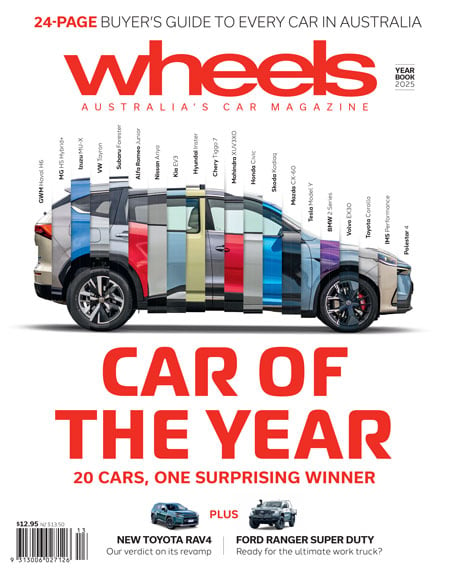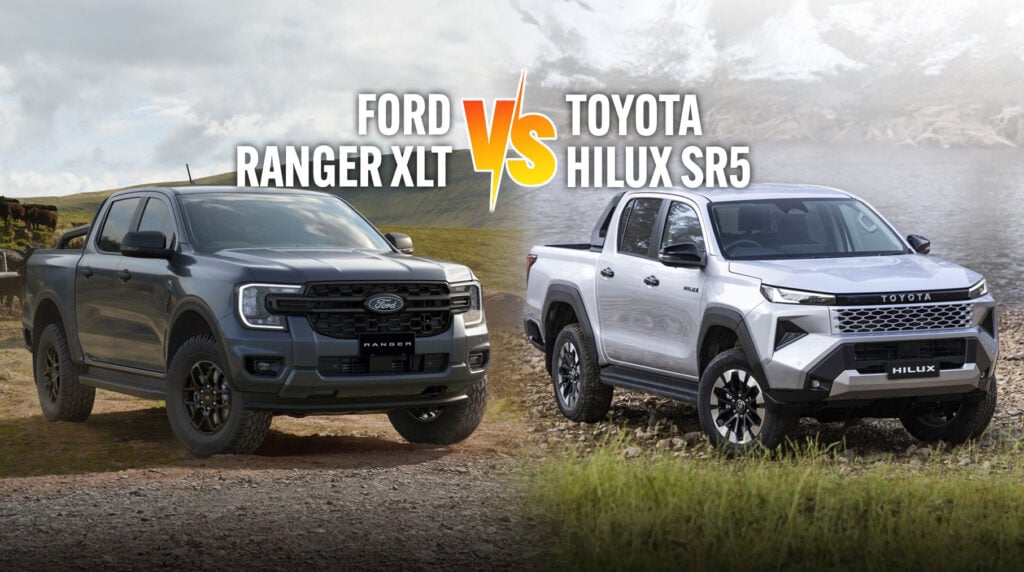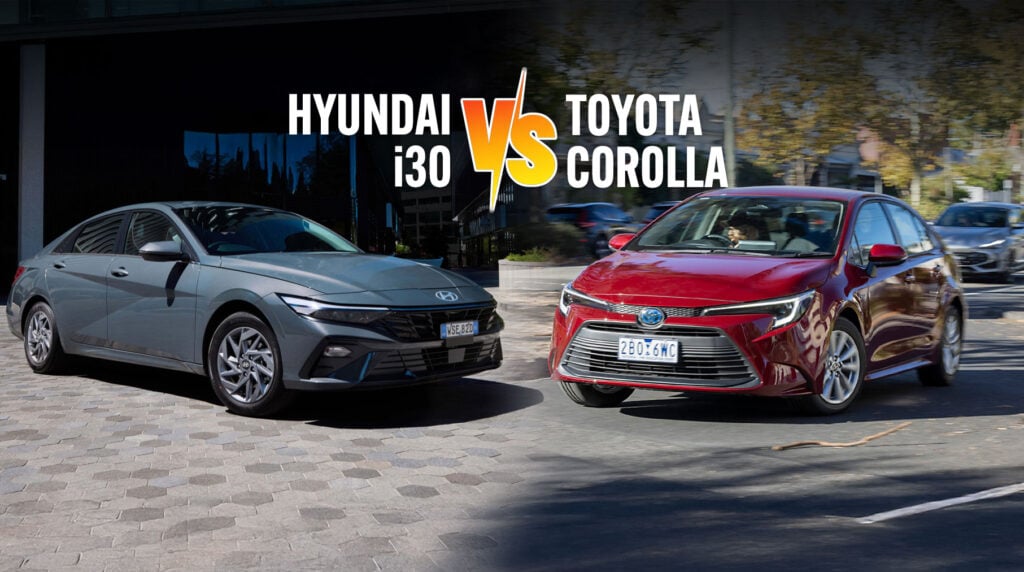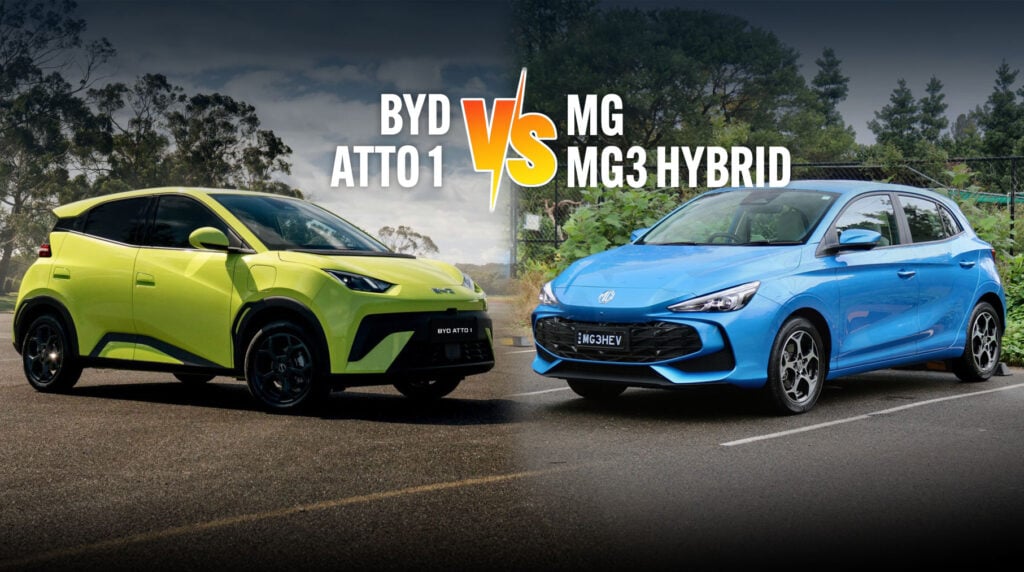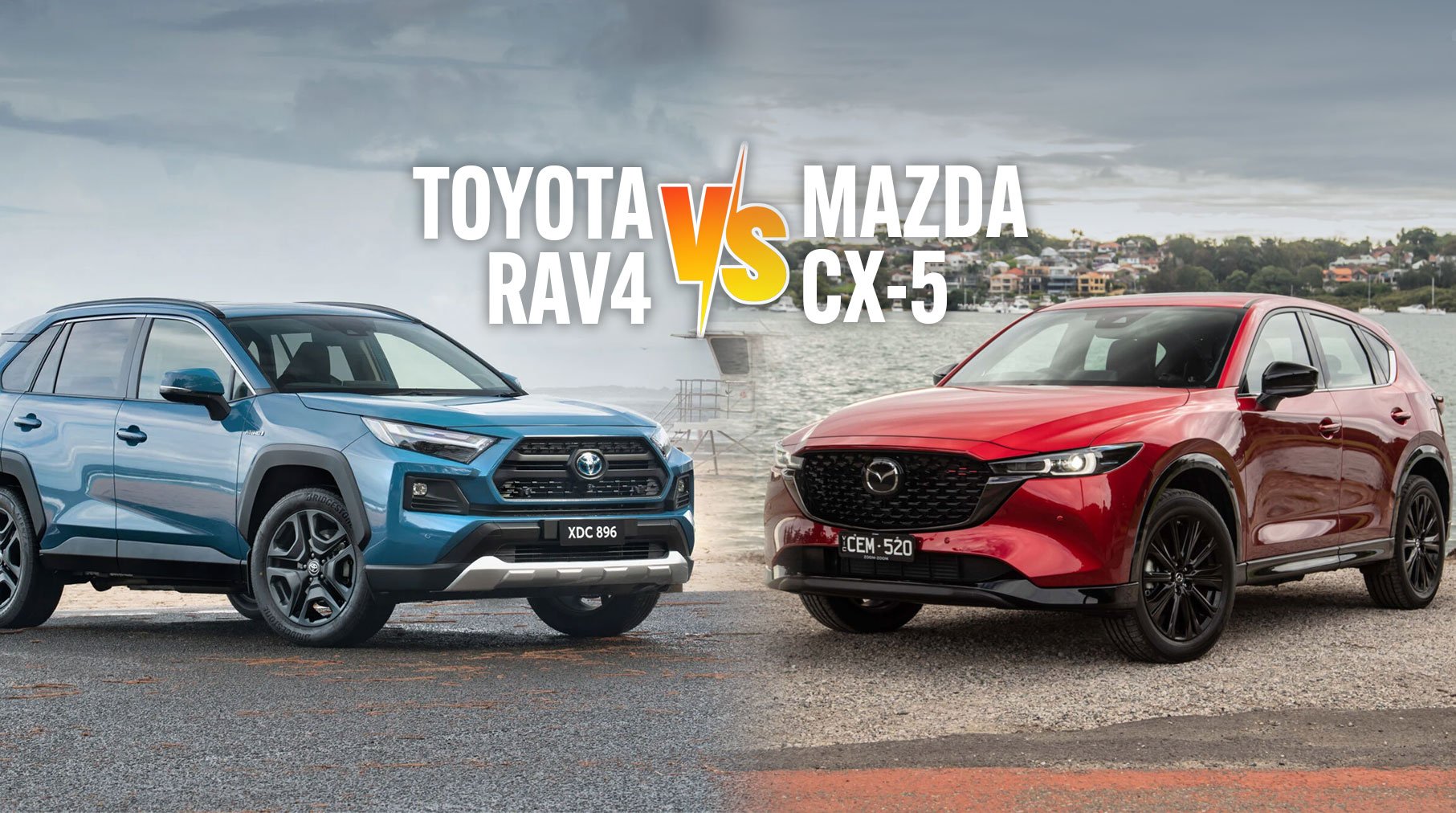
They might not be the freshest offerings, but according to the sales figures Aussies don’t really care. The Toyota RAV4 regularly battles the dual-cabs at the pointy end of the local charts and is dominant in its segment, but the Mazda CX-5 continues to hold its own as the third most popular medium SUV, only slightly trailing the Mitsubishi Outlander.
Does the Toyota deserve its place atop the family friendly pile? Should more people consider the Mazda? Is it a case of wait for the all-new generations of each that aren’t far away? Let’s put them head-to-head and see what we find.
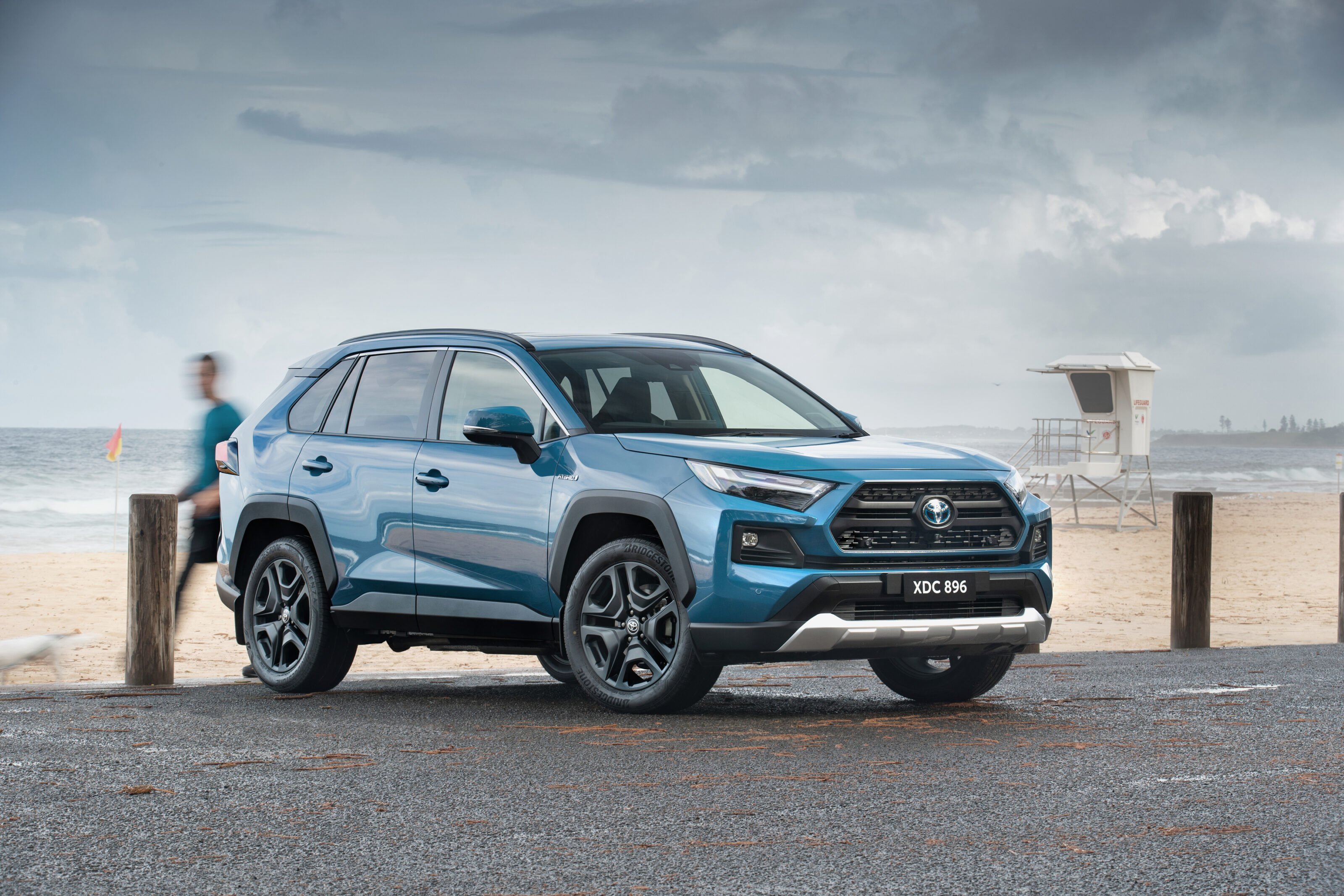
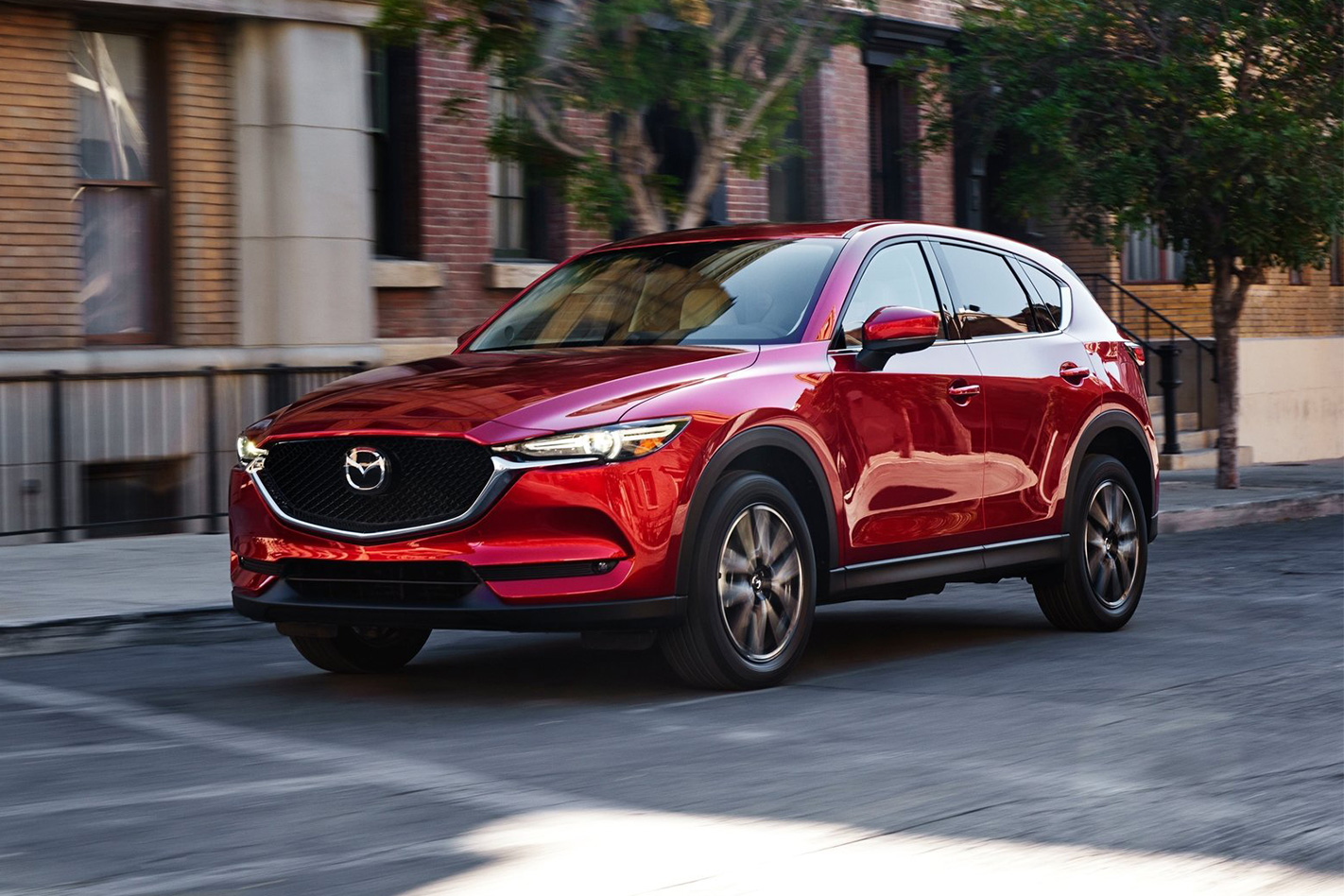
Pricing
As you might expect, both the Mazda CX-5 and Toyota RAV4 offer fairly extensive ranges, the former spanning from $36,590-$55,000 plus on-road costs (ORCs) and the latter a little more expensive at $42,460-$58,360 (+ORCs) now it’s an all-hybrid affair.
For the purposes of this article we’ll focus on a couple of upper-middle variants, the $50,310 (+ORCs) Mazda CX-5 G25 GT SP and $51,410 (+ORCs) Toyota RAV4 Cruiser Hybrid. If you want some more grunt, the CX-5 GT SP also comes in turbocharged G35 guise for $52,810 (+ORCs) while added traction can be had in the all-wheel drive RAV4 Cruiser Hybrid eFour for $54,410 (+ORCs).
Both brands offer a five-year/unlimited-kilometre warranty, though Toyota extends this to seven years on the drivetrain. Likewise, service intervals for both are 12 months or 15,000km, but whereas the RAV4 is $1350 over the first five visits, the Mazda is $2227.
Toyota does charge $99/year for roadside assistance, however, whereas Mazda throws in five years’ complimentary coverage. White is the only standard RAV4 colour, with all others $705, while Mazda offers the flashier silver-beige Platinum Quartz, blue and black at no cost, with other options adding $795.
Dimensions
Given all these cars are heavily benchmarked against one another, it should come as no surprise that the Mazda CX-5 and Toyota RAV4 are separated by millimetres. The RAV4 is 25mm longer, 10mm wider, 5mm taller and 7kg heavier, though its wheelbase is 10mm shorter. Nothing in it basically.
Where the two do differ, though, is in interior space. The RAV4 not only has a much larger boot at 580 litres to the Mazda’s 483, there’s significantly more room in the back seat, too, the CX-5 being a tight in terms of adult legroom.
| Mazda CX-5 | Toyota RAV4 | |
|---|---|---|
| Length | 4575mm | 4600mm |
| Width | 1845mm | 1855mm |
| Height | 1680mm | 1685mm |
| Wheelbase | 2700mm | 2690mm |
| Weight | 1693kg | 1700kg |
| Boot space | 438L | 580L |
| Charge time 10-80 per cent* | 23min | 15min |
Equipment
As befits their spots towards the top of their respective trees, there’s plenty of fruit to be found in the Mazda CX-5 GT SP and Toyota RAV4 Cruiser. They’re a fairly close match in most regards and while the table below isn’t exhaustive, it should cover the obvious features most will be after.
| Equipment | Mazda CX-5 GT SP | Toyota RAV4 Cruiser |
|---|---|---|
| Wheels | 19-inch | 18-inch |
| LED headlights | X | X |
| Sunroof | X | X |
| Roof rails | – | X |
| Electric seats | 10-way driver’s, six-way passenger | 10-way driver’s, eight-way passenger |
| Heated seats | Front | Front |
| Ventilated seats | – | Front |
| Climate control | Dual-zone | Dual-zone |
| Power tailgate | X | X |
| Keyless entry | X | X |
| Stereo | 10-speaker | Nine-speaker |
| USB ports | 2 x USB-C, 2 x USB-A | 4 x USB-C, 1 x USB-A |
| Head-up display | X | – |
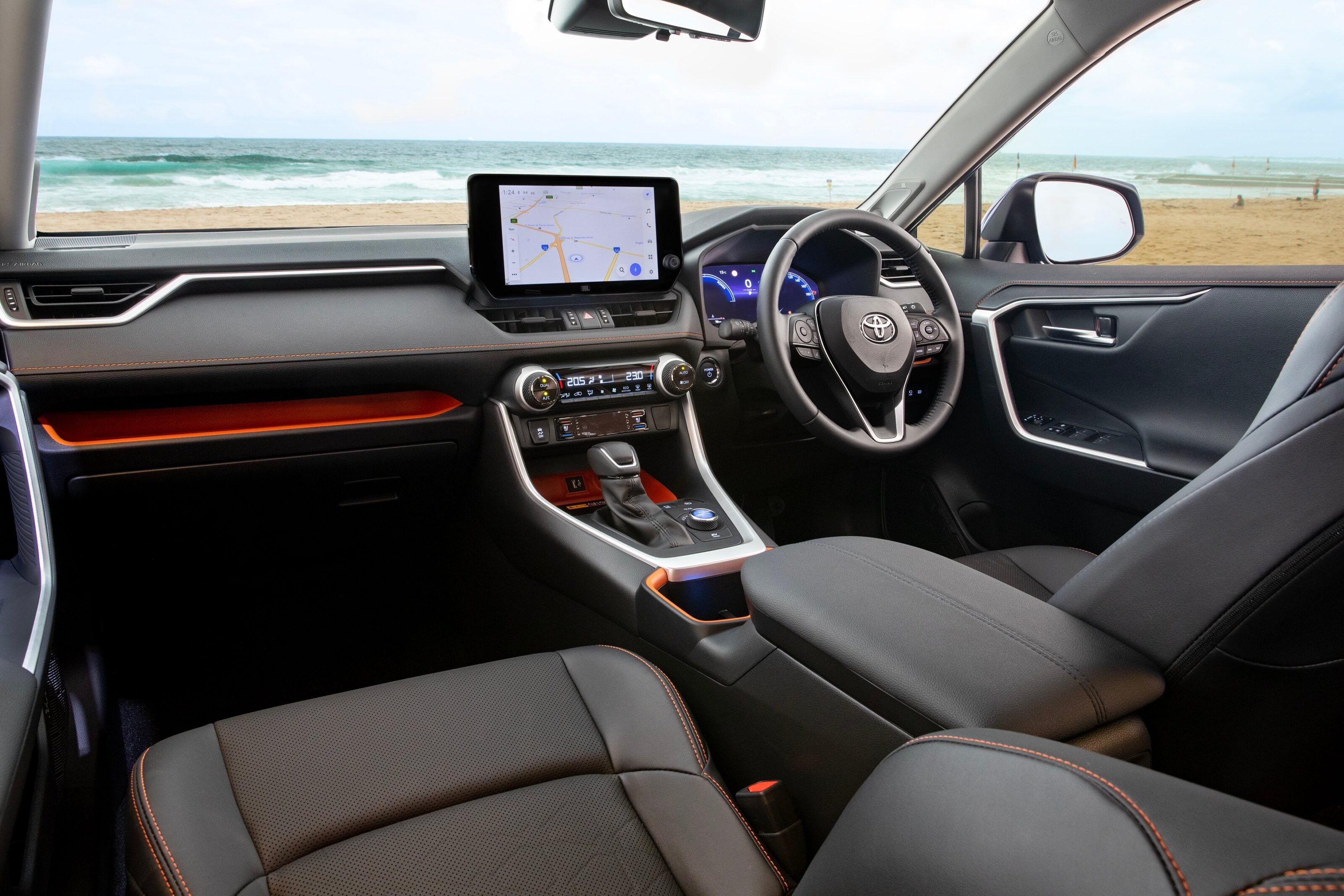
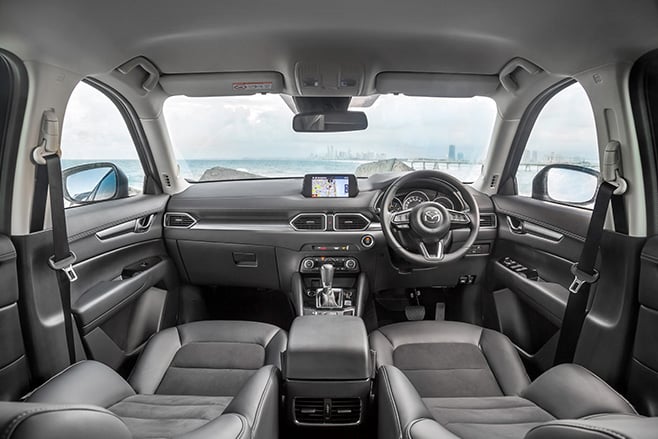
Powertrains
While 2.5-litre four-cylinder petrol engines feature under the bonnet of both the Mazda CX-5 GT SP and Toyota RAV4 Cruiser there are plenty of differences in their operation. The Mazda’s Skyactiv engine sends 140kW/252Nm to all four wheels via a six-speed automatic gearbox.
If you’re a keen driver, the extra $2500 for the 170kW/420Nm turbocharged version could be money well spent as it gives the CX-5 genuinely enjoyable punch but it comes with a commensurate increase in fuel consumption. The standard version claims 7.4L/100km on the combined cycle.
Hybrid assistance means the RAV4 can offer the best of both worlds. Not only is it more powerful at 160kW/221Nm (the latter figure being the engine figure only), its claimed combined fuel consumption is just 4.7L/100km. And that’s no test anomaly, it’s a relatively representative figure.
Unless you really need the added traction of all-wheel drive the extra $3000 for the eFour is questionable value, though it can tow 1500kg (braked), whereas the 2WD is limited to 480kg. Both the Mazda and Toyota are happy with 91RON fuel.
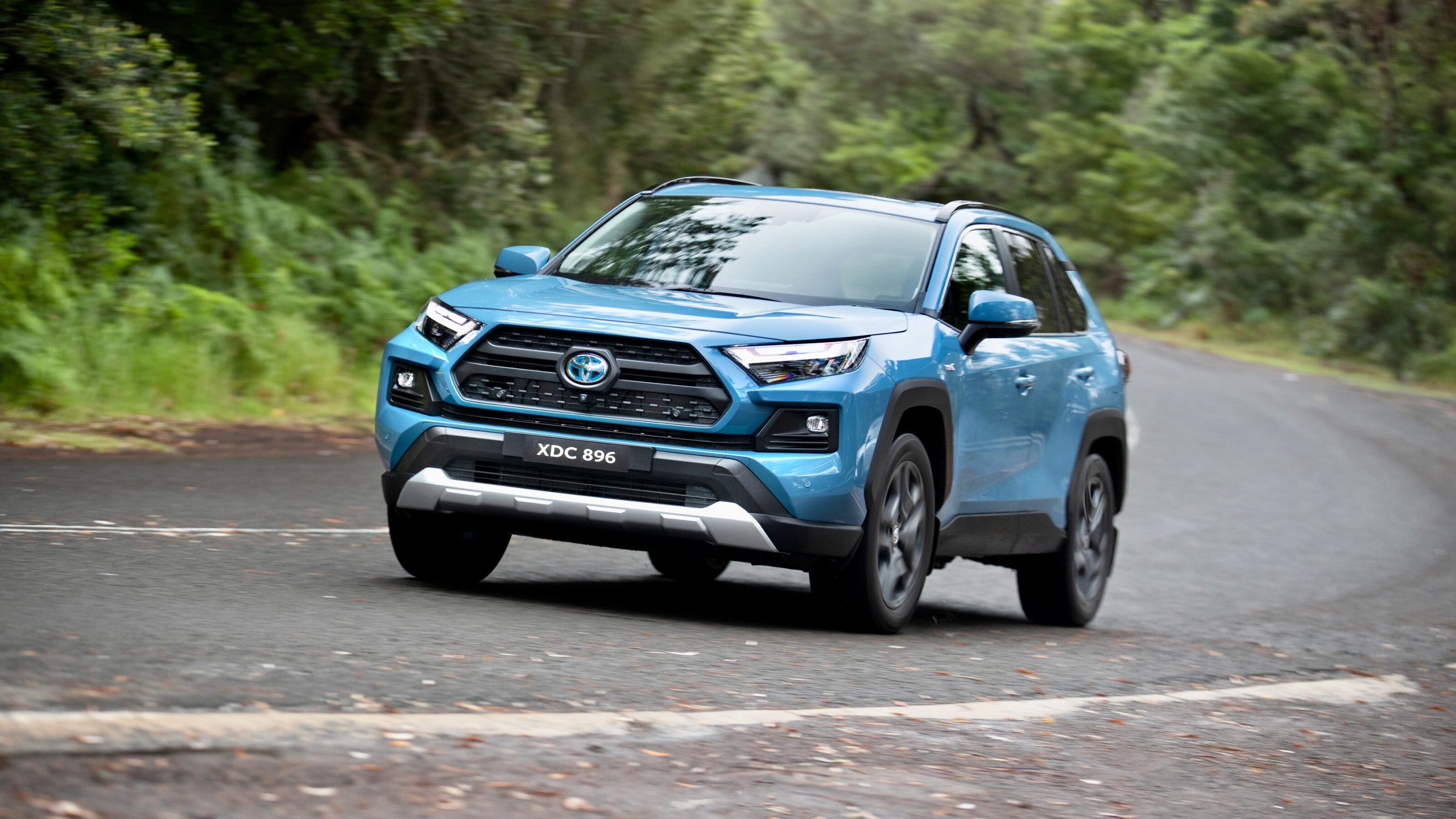
Technology
While older vehicles at their cores, the Mazda CX-5 and Toyota RAV4 have received regular updates throughout their life to remain competitive. The CX-5 features a 10.25-inch infotainment screen with wireless smartphone mirroring and digital radio along with a wireless charging pad and a quasi-digital driver’s instrument display.
Once more, the RAV4 is similar, though it has a completely digital 12.3-inch instrument display and the 10.5-inch infotainment screen has wireless Apple CarPlay but you need to plug in for Android Auto. Digital radio and wireless charging also feature, while Toyota offers 12 months of complimentary access to the complete Toyota Connected Services.
Following this 12-month period, SOS emergency call, automatic collision notification and vehicle information will still be complimentary but adding stolen vehicle tracking and remote vehicle functions is $9.95/month and including connected navigation and multimedia profiles lifts this to $12.50/month.
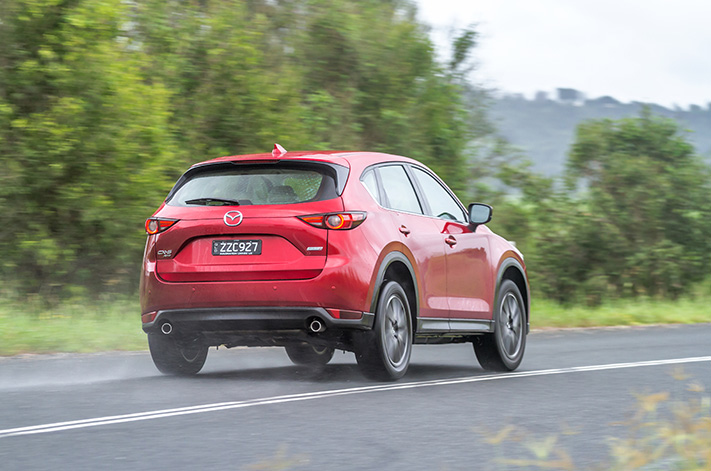
Safety
The Mazda CX-5 is now listed as unrated by ANCAP as its five-star rating from 2017 is deemed to have expired. That rating carried scores of 95 per cent for adult occupant protection, 80 per cent for child occupant protection, 78 per cent for pedestrian protection and 59 per cent for safety assist.
That latter score is particularly low, but the CX-5 has been updated in the meantime and in addition to six airbags it has all the modern active safety features as standard, including adaptive cruise control, auto-emergency braking in forward and reverse, lane-keep assist and departure warning, rear cross-traffic alert and speed sign recognition.
The Toyota RAV4 basically mirrors this, with the addition of a panoramic view monitor for better vision while parking and an extra airbag. It retains its five-star ANCAP rating, albeit an older one from 2019, with scores of 93 per cent for adult occupant protection, 89 per cent for children, 85 per cent for pedestrians and 83 per cent for safety assist.

Driving
While it might not necessarily be the top priority for most buyers, both the Mazda CX-5 and Toyota RAV4 are two of the better-driving medium SUVs available, albeit in slightly different ways.
Keen drivers will enjoy the CX-5 as it’ll happily carve through corners with accurate steering and balanced, trustworthy handling without sacrificing ride comfort. The engine needs a bit of a rev for to give its best but it’s happy to do so and the automatic is smooth and responsive.
For years the words ‘RAV4’ and ‘dynamics’ didn’t belong in the same sentence, but the latest iteration is a very impressive vehicle. Comfortable, easy to drive and the hybrid system not only improves fuel efficiency but helps the petrol engine out where it needs it most.
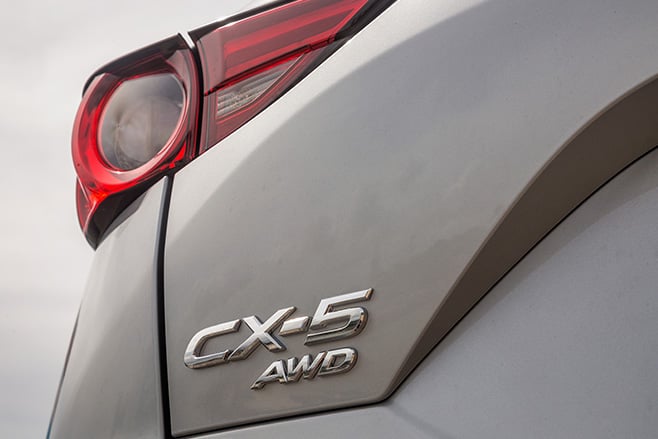
Conclusion
In both instances here, the sales figures don’t lie. The Mazda CX-5 won’t be for everyone, but if outright space isn’t high on your priority list then it’s a well-equipped, fine-driving SUV that’s making thousands of people a month happy.
However, the RAV4’s dominant position isn’t down to the might of Toyota’s marketing machine (though that doesn’t hurt). It’s a very difficult package to pick flaws in, with plenty of space, benchmark running costs, excellent safety credentials, all the equipment you’d need and it’s a fine drive to boot.
If having the latest and greatest isn’t that important to you, keep an eye out for deals as both manufacturers sharpen their pencils as the all-new generations of both models approach.
We recommend
-
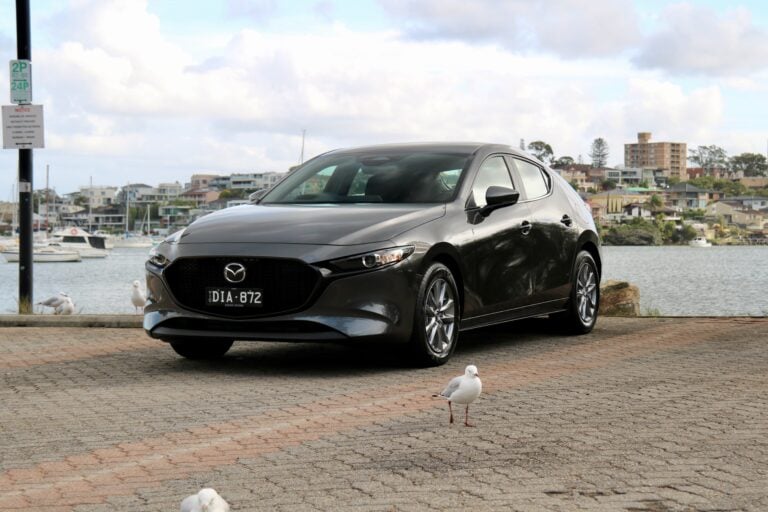 Reviews
ReviewsMazda3 G20 Pure hatchback: Mature drive and excellent cabin offset dated engine
Hatchbacks aren't as popular as they once were but for those still in the market for one, here's our assessment of one of the most enduringly popular: the Mazda3.
-
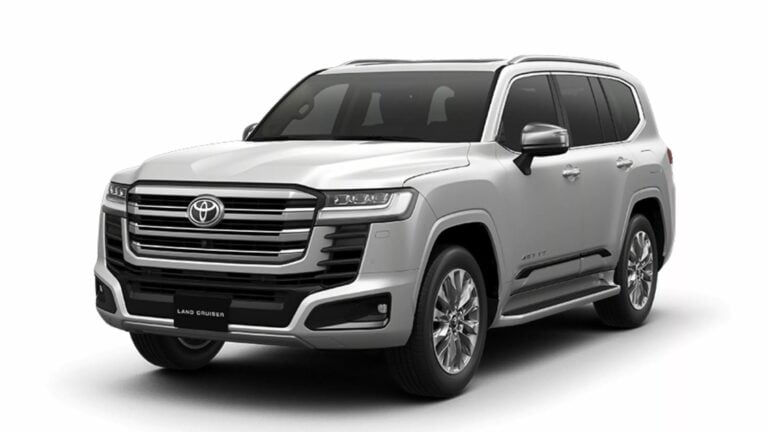 News
NewsToyota LandCruiser 300 Series hybrid confirmed for Australia in 2026
Hybridised version of the LandCruiser 300 Series to launch locally in the first half of 2026 using the same drivetrain as the Tundra truck.

